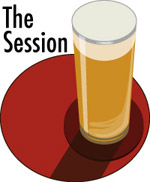
Chatter about the increasing popularity of pilsner, maybe even pale lager, is pretty constant on Twitter, but got a little louder following a recent story in The Washington Post (“Make room, hoppy IPA. Pilsener is the buzzy new craft beer”). In it, Matt Brynildson makes it clear that Firestone Walker’s Pivo Pils is a hoptimized, Americanized version of a pale lager.
But time moves on and memories fade. After drinking fresh Pilseners on trips to Europe, Brynildson decided he wanted to bring one back to Southern California. That became Firestone’s Pivo Hoppy Pils, which uses German hops, malt and yeast, but adds dry-hopping with spicy, citrusy Saphir hops, a technique not used in the old country. “I put it under the nose of a German brewmaster, and they say, ‘This is nice, but this is not a Pilsener,'” he laughs. “Pivo is just too aromatic, too hop-aroma-forward for Europe.” It does well in hop-crazy America, though: Pivo won gold medals at the Great American Beer Festival every year from 2013 to 2015. For IPA lovers who are just moving into Pilseners, there’s something more recognizable from the level of hops, even if they don’t taste the same as the tropical hops in, say, Firestone’s Luponic Distortion IPA.
 Host Christopher Barnes has posted the roundup for
Host Christopher Barnes has posted the roundup for 